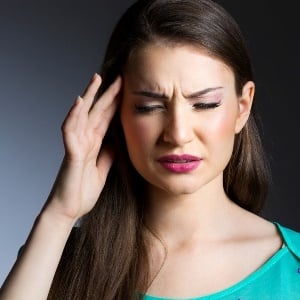
Most migraine sufferers are treated with medication, but non-drug treatment is sometimes a better option.
Migraine treatment often includes medication, but the majority of migraine sufferers respond very well to non-drug treatment.
Medication
Two types of drugs are used to treat migraines:
- Medication to treat an attack
- Medication to prevent an attack
Medication to treat an attack
In some people, migraine headaches can be relieved by a mild painkiller – for example, paracetamol, aspirin or naproxen (NSAID) – if taken in high enough doses and if taken early enough. Stronger analgesics, containing codeine or caffeine, are often necessary.
If nausea or vomiting accompanies the migraine, tablets may not be absorbed efficiently from the gut. Effervescent tablets or suppositories are then often more effective.
Anti-nausea medication can help to reduce accompanying nausea and vomiting.
Ergot alkaloids (made from a fungus that grows on grain) such as Cafergot or Migril, might help if taken early enough. They are, however, not effective once the headache is established.
When taken in excess and especially with poor timing, these medications may exacerbate rather than alleviate a headache. Ergotamine has a number of side-effects. Care should be taken not to exceed the recommended dose.
The triptan drugs, Imigran, Maxalt, Relpax, Zomog and Axert are effective in many cases. These medications are available on prescription and can be used at any stage of a migraine – bringing rapid relief in about half an hour in approximately 80% of patients.
The triptans, Cafergot and Migril all have the same mode of action – they constrict the painfully dilated and stretched arteries in the scalp. If they are effective, it means that the pain originates in the scalp arteries. In these patients, surgical treatment of these scalp arteries is often a permanent solution to the problem.
Medication overuse headache
The biggest problem with the “rescue” medications is that if they are taken on a regular basis, they may cause a condition called medication overuse headache (MOH). This means that the drugs themselves gradually cause the headaches to get worse, more severe and more frequent.
The patient then has to increase the dose, starting a vicious cycle of worsening headaches and increasing amounts of drugs. This is why the non-drug approach is preferable.
Medication to prevent an attack
If attacks occur more often than three times a month, drugs to prevent attacks are often prescribed. The drugs commonly used to prevent migraine are not often effective, though, and frequently cause such unpleasant side effects that patients stop taking them and prefer to live with the pain instead.
Unfortunately there has still been no progress in the area of developing new drugs to prevent migraine.
Current migraine-preventing drugs include
- Beta-blockers such as propranolol (i.e. Inderal), which will reduce blood vessel dilatation
- Pizotifen (Sandomigran) – unfortunately often associated with weight gain
- Anti-epileptic drugs
- Anti-depressants such as amitryptyline
- Clonidine, which inhibits blood vessel contraction and dilatation
- Flunarizine (Sibelium) methysergide
- Cyproheptadine (Periactin)
Non-drug treatment
Most patients, given the option, opt for non-drug treatment.
The first step in non-drug treatment is to diagnose where the pain is actually coming from. In migraine, there are two anatomical structures where the pain most often starts. It may come from:
- The muscles of the jaw and neck
- The arteries of the scalp (not from inside the brain)
Muscle pain
The best treatment for the muscle component of migraine pain is by means of a plate worn in the palate, called a Posture Modifying Appliance or PMA. Wearing the PMA causes the jaw and neck muscles to relax, and is effective in many migraine sufferers.
In five out of six cases, this is all that is necessary. Other treatments such as physiotherapy, exercise, traction, Botox and minimally invasive bloodless surgery are also used for the muscle tension component.
Artery pain
It is interesting that in many patients with artery pain, when the muscles are relaxed by means of the PMA, the artery pain also subsides. In patients where the pain doesn’t improve with the PMA, the arteries can be treated surgically. In many migraine sufferers this is a permanent cure for their migraines. The opposite sometimes also happens; when the artery pain is successfully treated with surgery, the muscle pain often subsides.
Read more:
Reviewed by Dr Elliot Shevel, BDS, Dip MFOS, MB, BCh, Maxillo-facial and Oral Surgeon and Medical Director, The Headache Clinic, Johannesburg and Cape Town, February 2015.




 Publications
Publications
 Partners
Partners











